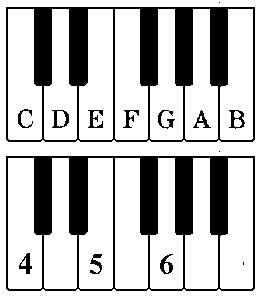Values
for the High Holy Days
(Rosh Hashanah began at sundown September 22; Yom Kippur begins at sundown October 1. —holidays.net)
Mark Finkelstein today:
"Today comes more evidence of the left's painful struggle to deal with its diminished standing and repeated rejection at the polls. In the subscription-required Why Voters Like Values, [New York] Times columnist Judith Warner claims that "the Christian right's ability to stir voter passions is based not on values, but on psychology." Warner describes having bravely gone inside the belly of the conservative beast, recently attending a Values Voters Summit in DC, and declaring it "imbued with so much intolerance and hate." This is presumably in contrast with liberal love-ins, where Bush & Co. are regularly depicted as liars, murderers, Hitlers, etc.
She later describes a schadenfreude-provoking scene of the day after Kerry's 2004 defeat, picking through the rubble with Harvard psychology professor emeritus, Jerome Kagan, who tried to console Warner and presumably himself. As she describes it:
"Our conversation drifted to the Republicans' 'values' [note scare quotes] agenda, and Kagan's belief that values sell because they're an antidote to the endemic mental health problem of our time: depression.
"'Humans demand that there be a clear right and wrong,' he said. 'You've got to believe that the track you've taken is the right track. You get depressed if you're not certain as to what it is you're supposed to be doing or what's right and wrong in the world."
"People need to divide the world into good and evil, us and them, Kagan continued. To do otherwise– to entertain the possibility that life is not black and white, but variously shaded in gray– is perhaps more honest, rational and decent. But it's also, psychically, a recipe for disaster."
Got it? Liberalism is "more honest, rational and decent" than conservativism, but that's just not what the benighted public wants. They're looking for political Prozac, a Manichean worldview they can cling to, and that's what conservatism cunningly offers.
Less controversial values are provided by yesterday evening's Pennsylvania lottery— namely, the values 4, 5, and 6.
For a discussion of these values under the guise of musical intervals, see Professor Kagan again, in a paper (pdf) he wrote with Marcel R. Zentner, "Infants' Perception of Consonance and Dissonance in Music" (Infant Behavior & Development, Vol. 21, No. 3, 1998):
Adults judge as most consonant either the octave (difference of 12 semitones) [or the unison, difference of 0 semitones], the fifth (7 semitones), or the major third (4 semitones).
Illustration (see also yesterday evening):

Notes and frequency ratios
The paper discusses consonant intervals
as an example of alleged
"perceptual universals."
Related material on universals
suitable for today, the Feast of
St. Michael and All Angels:
Shining Forth and
Midsummer Eve's Dream.
The material in Shining Forth
is also related, tangentially, to the
following presentation of the
Warner "values" essay
in today's online New York Times:

The above three Times items,
taken together, suggest that
those in search of "values"
should consult Betty Suarez:

Click on picture for further details.

































